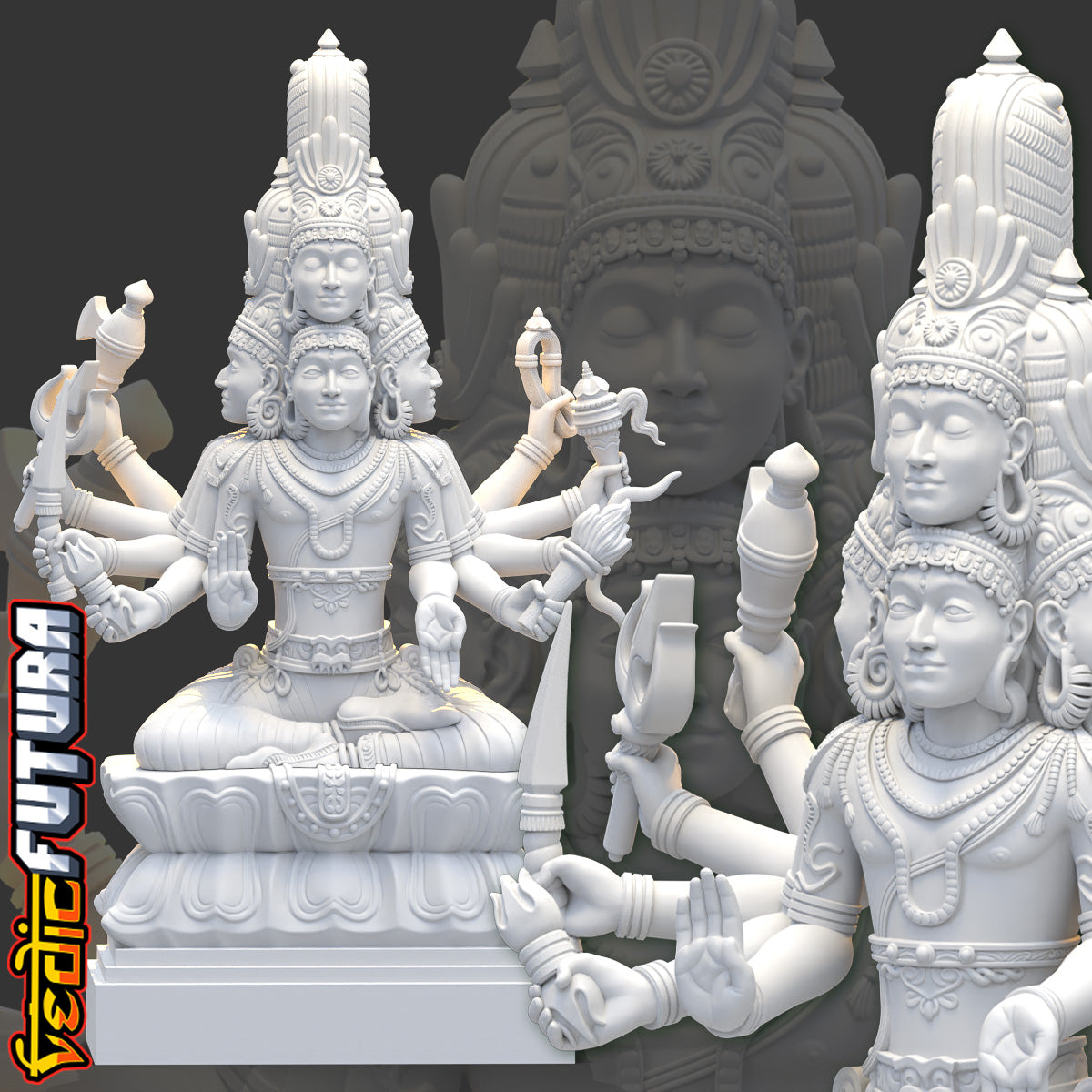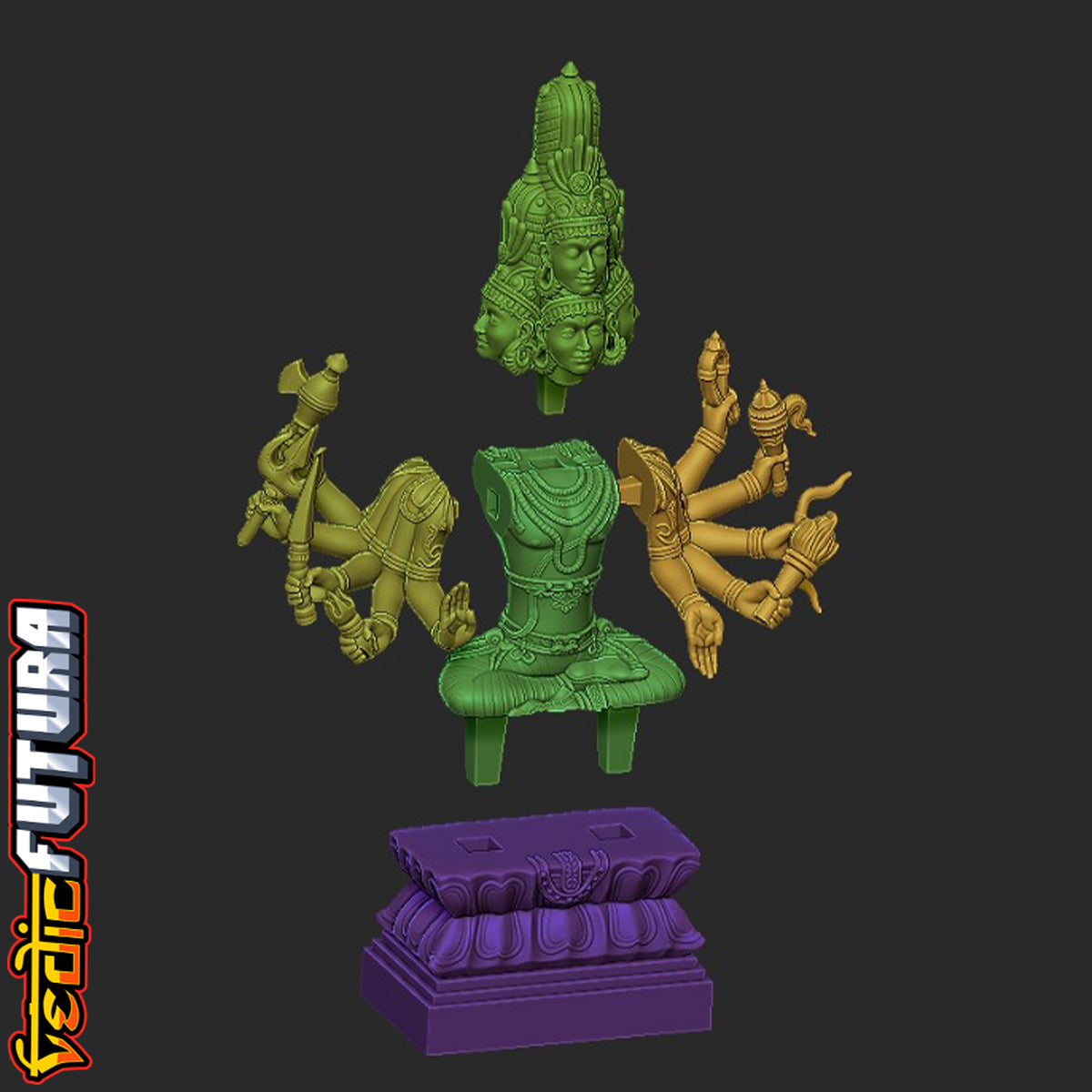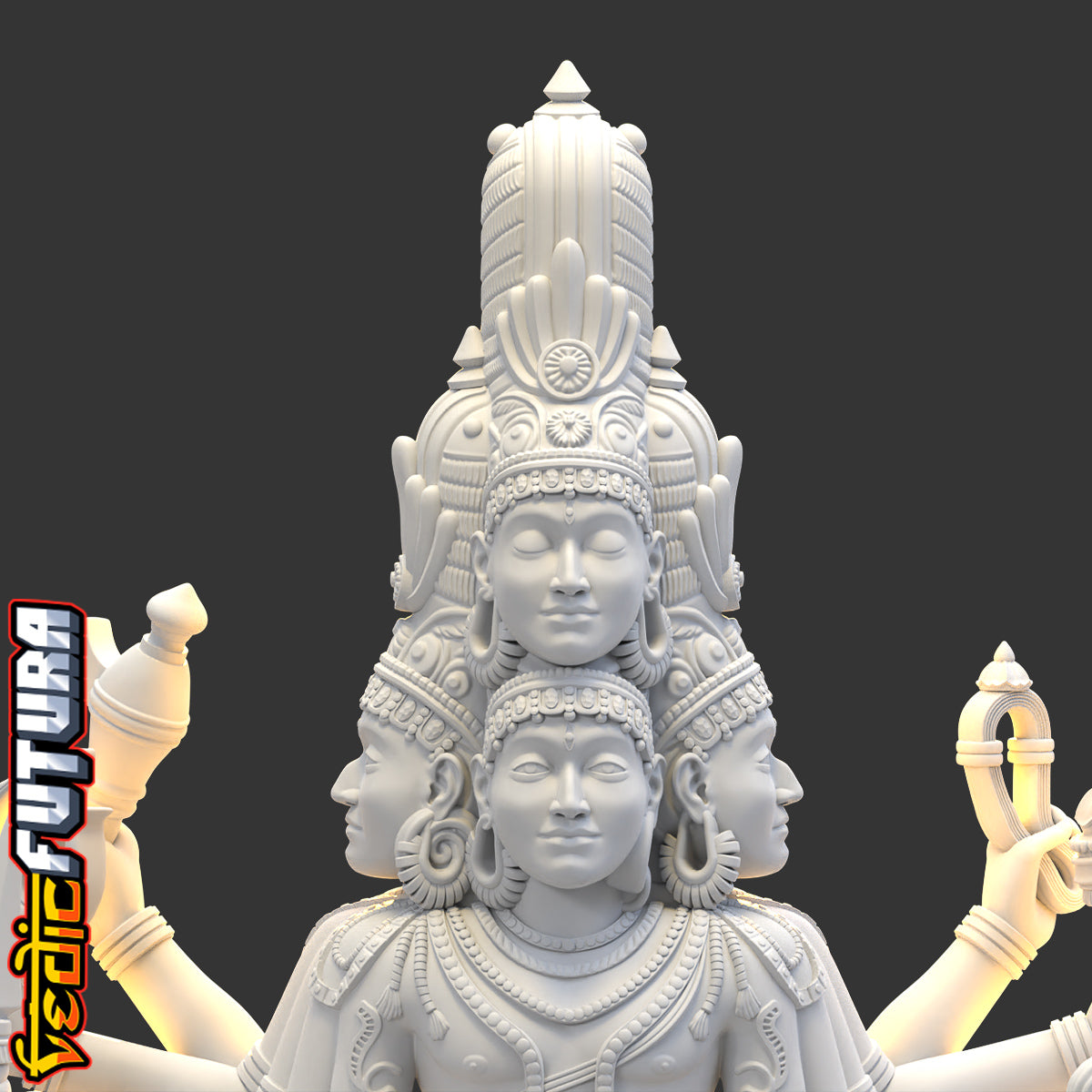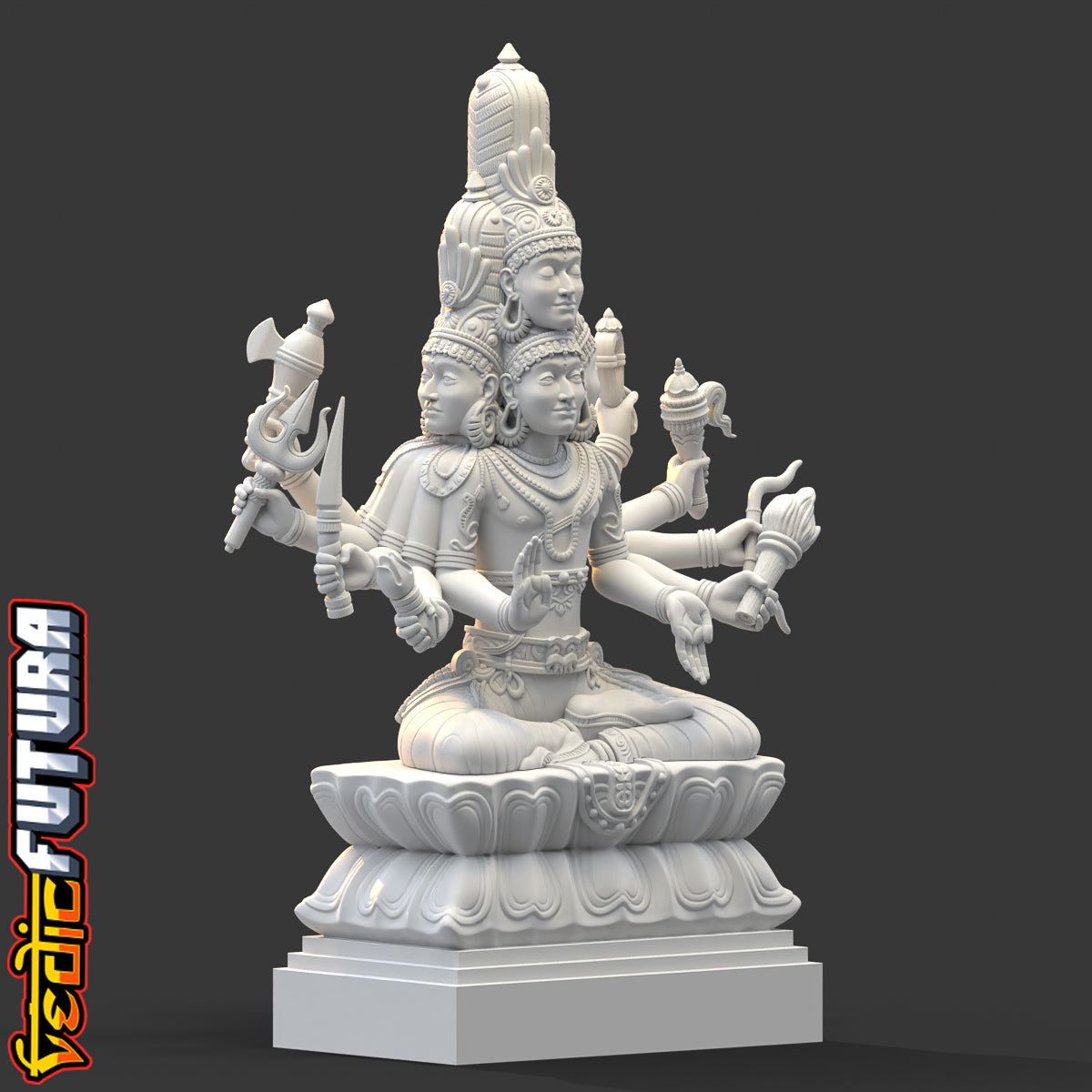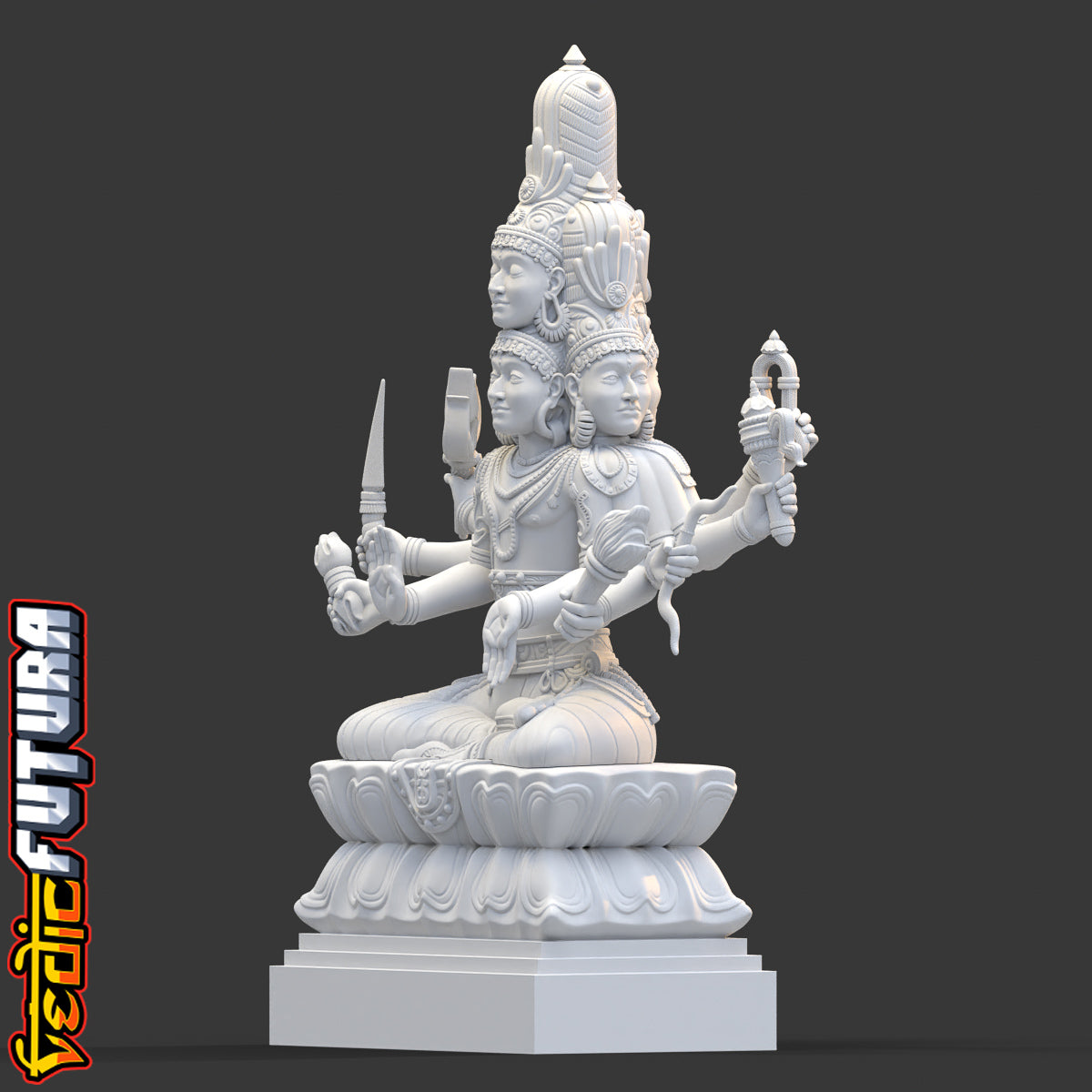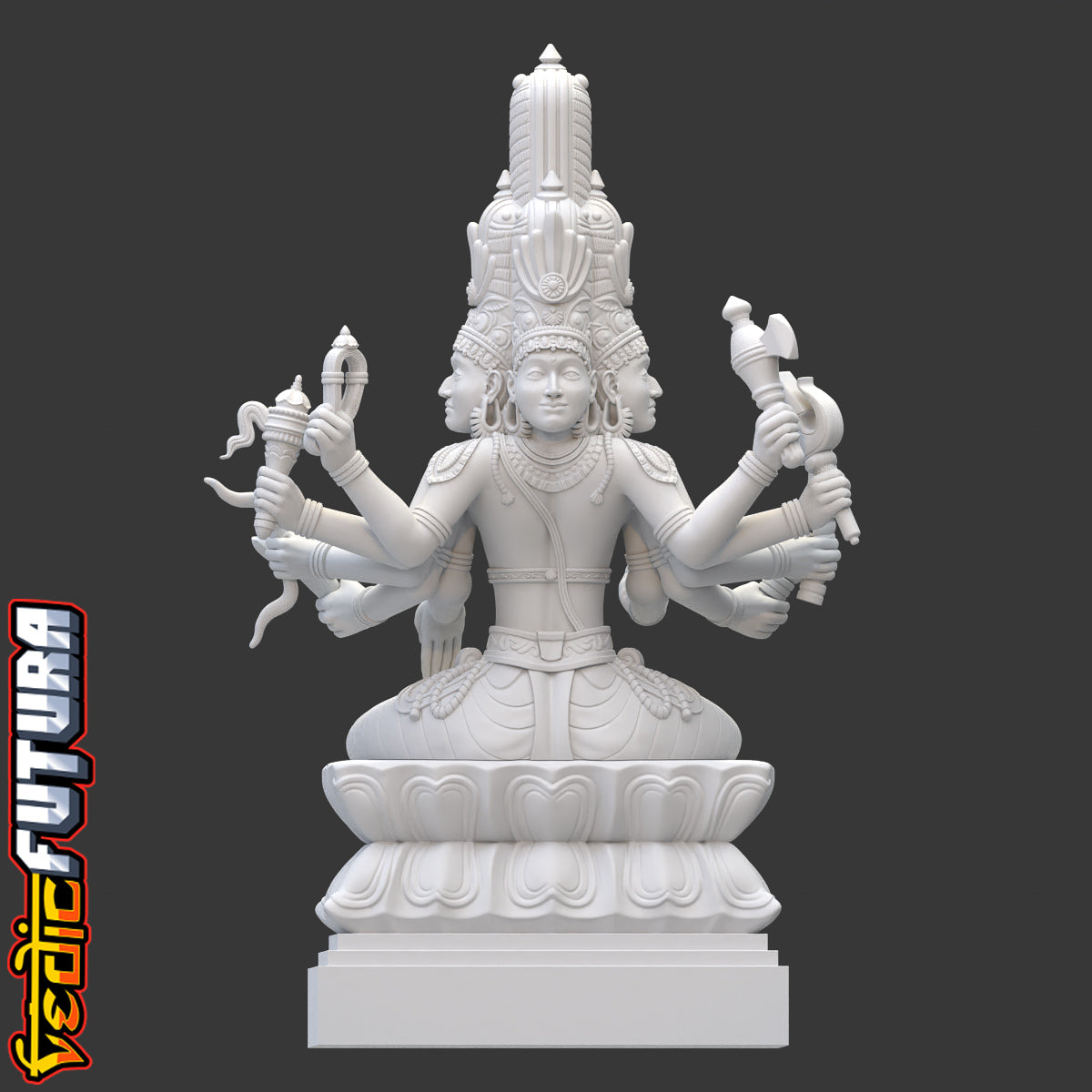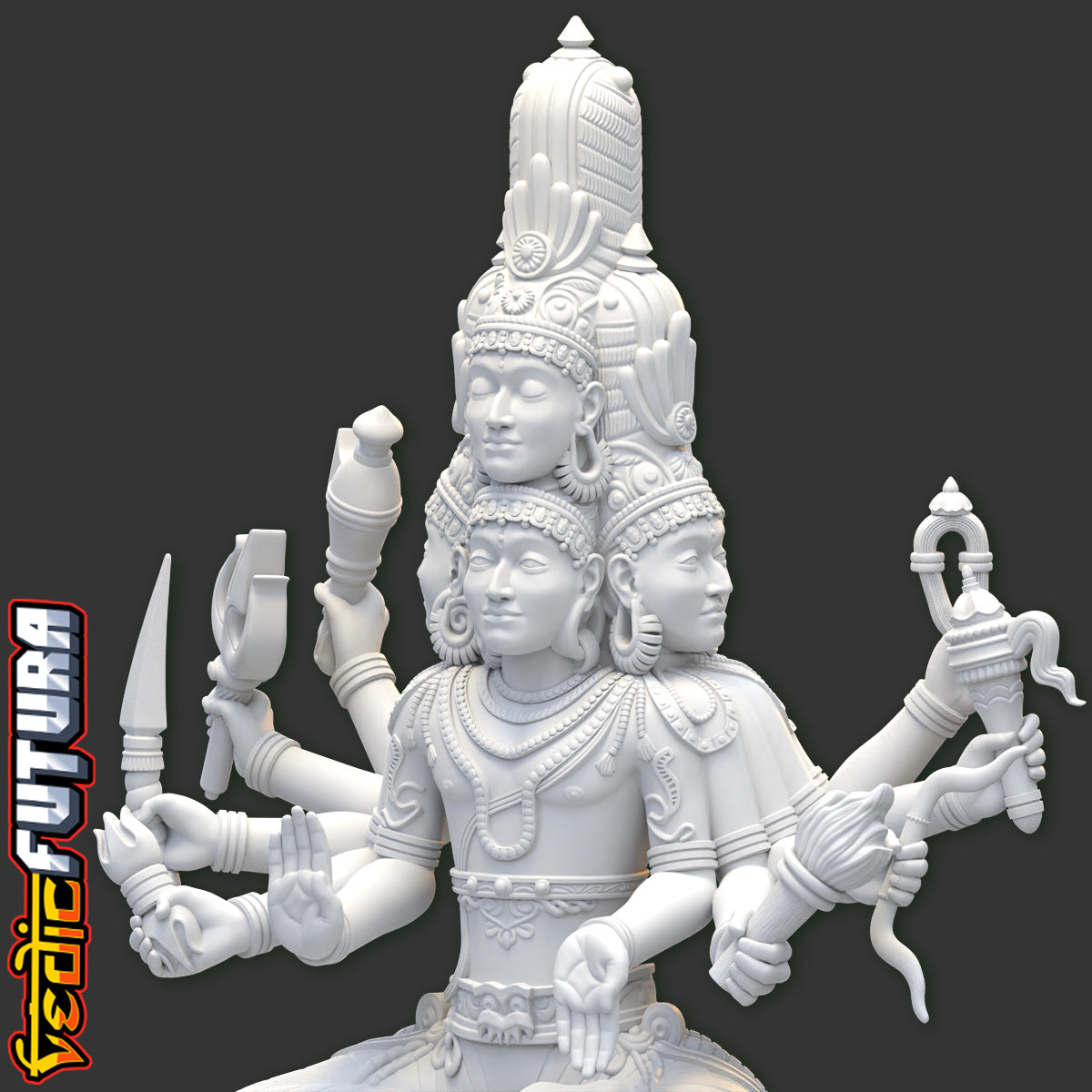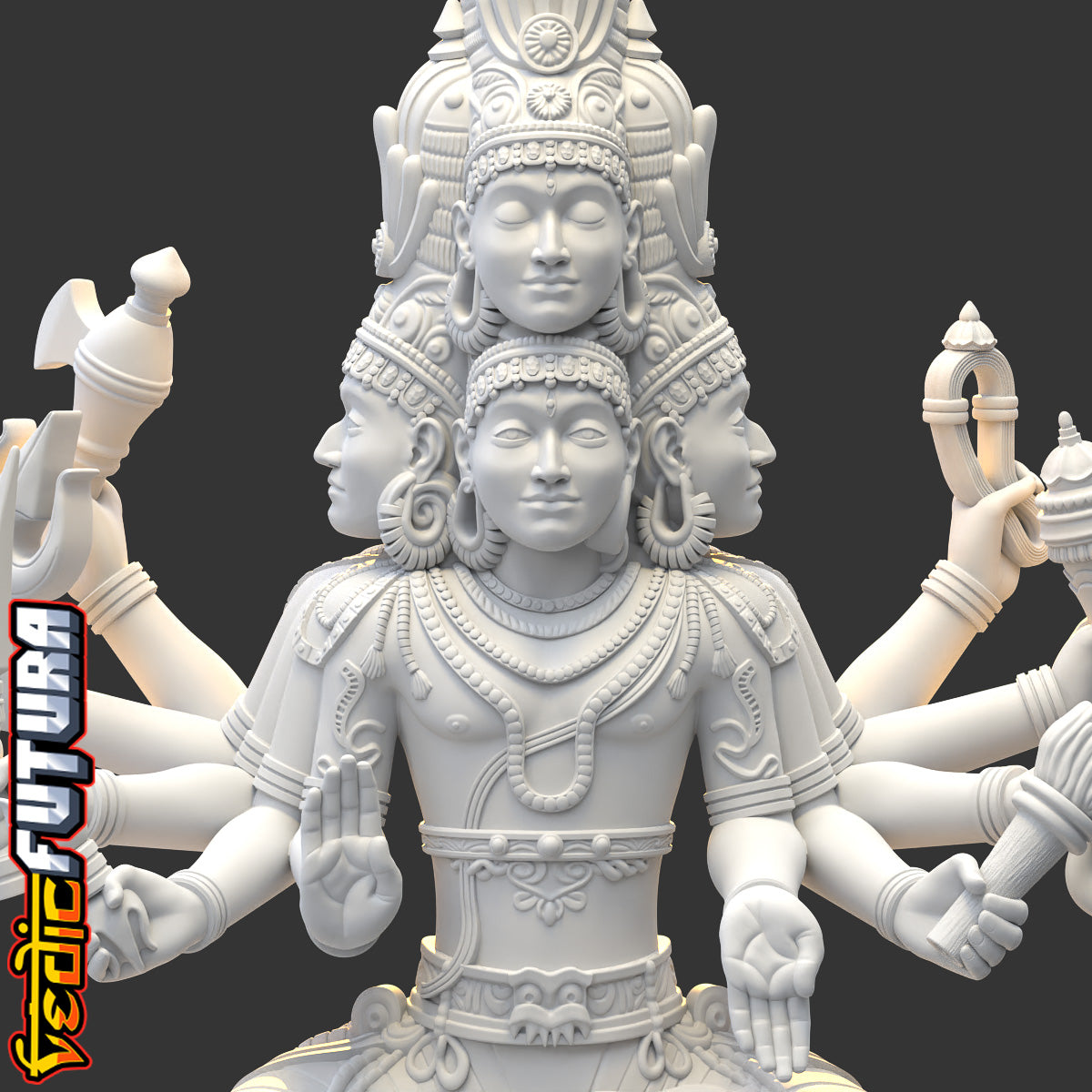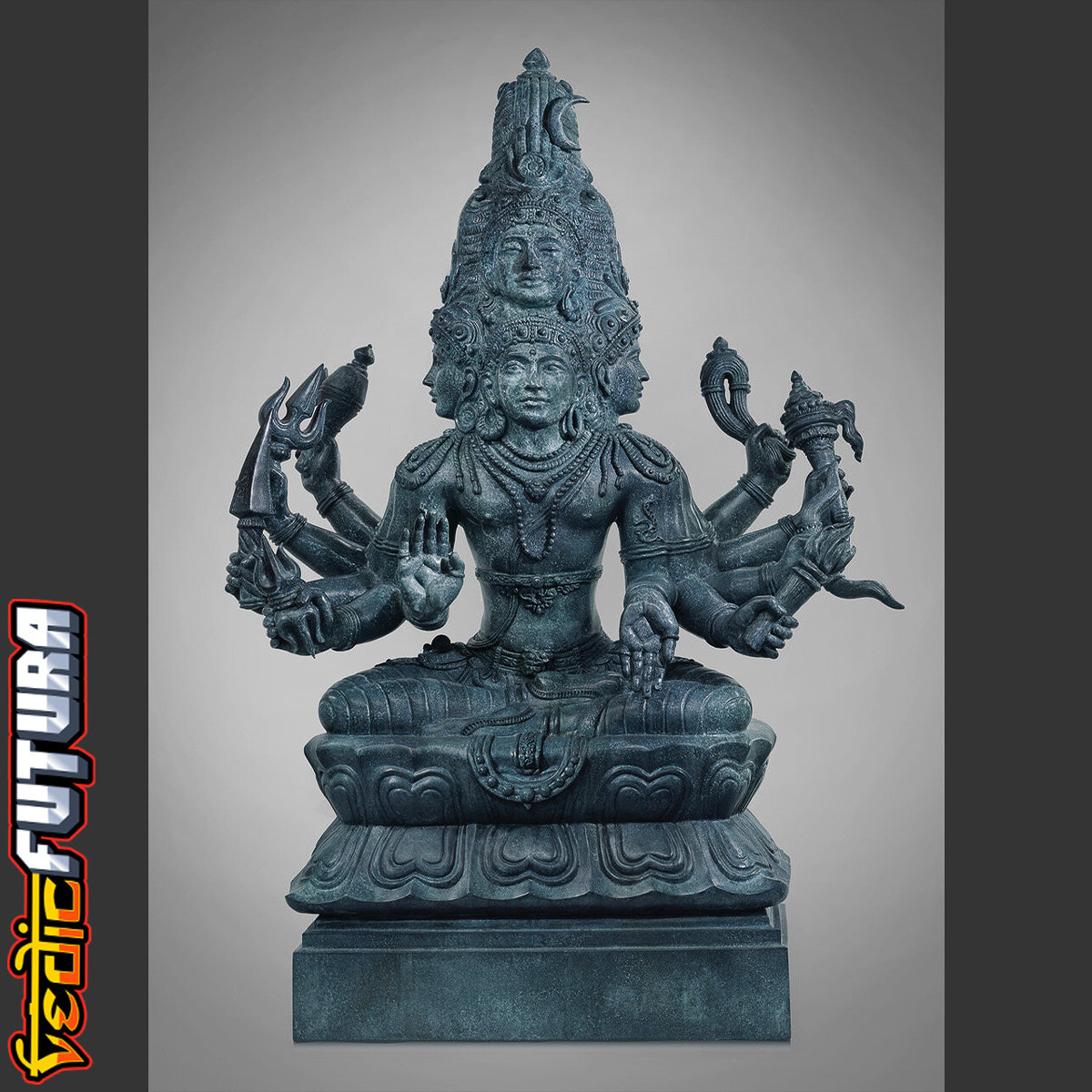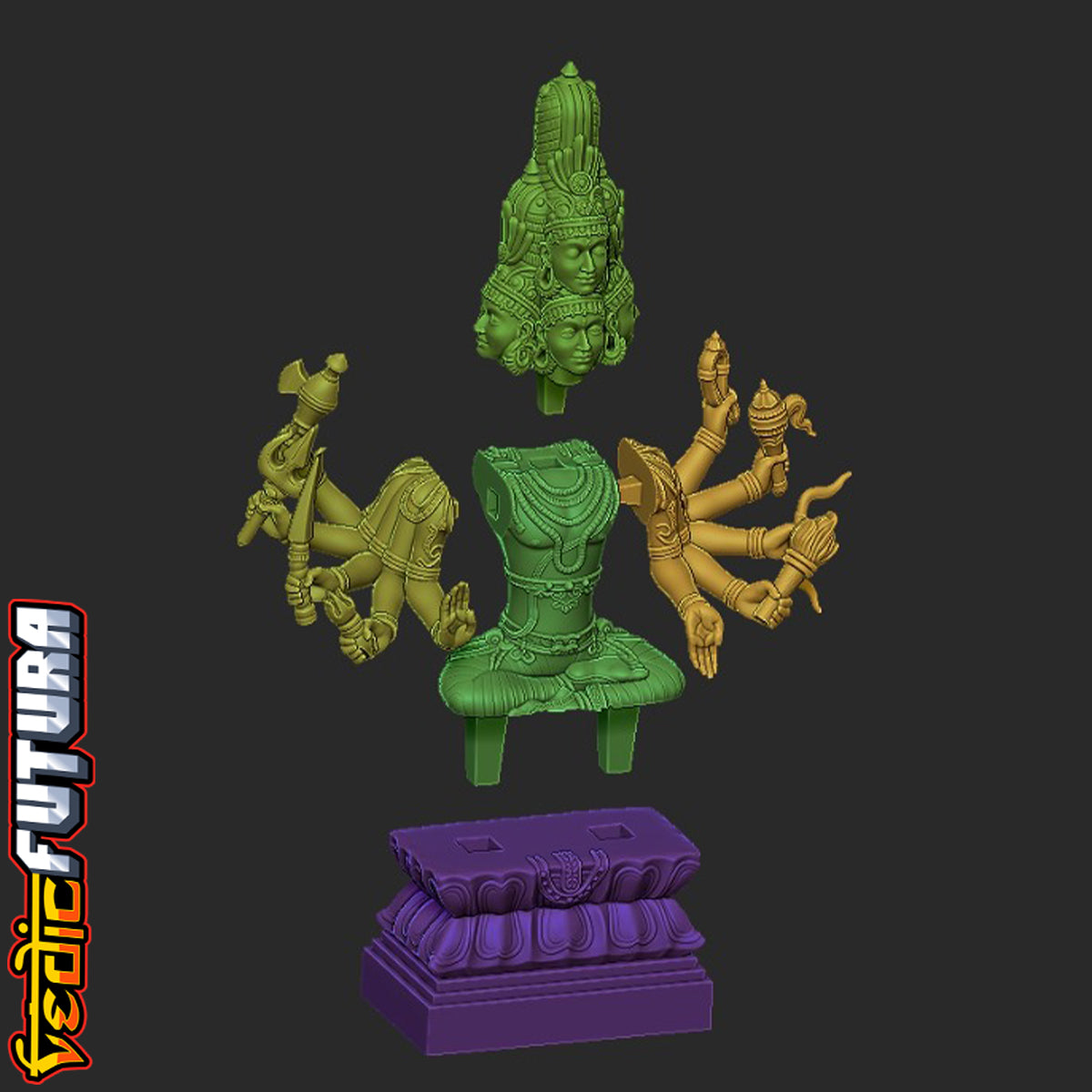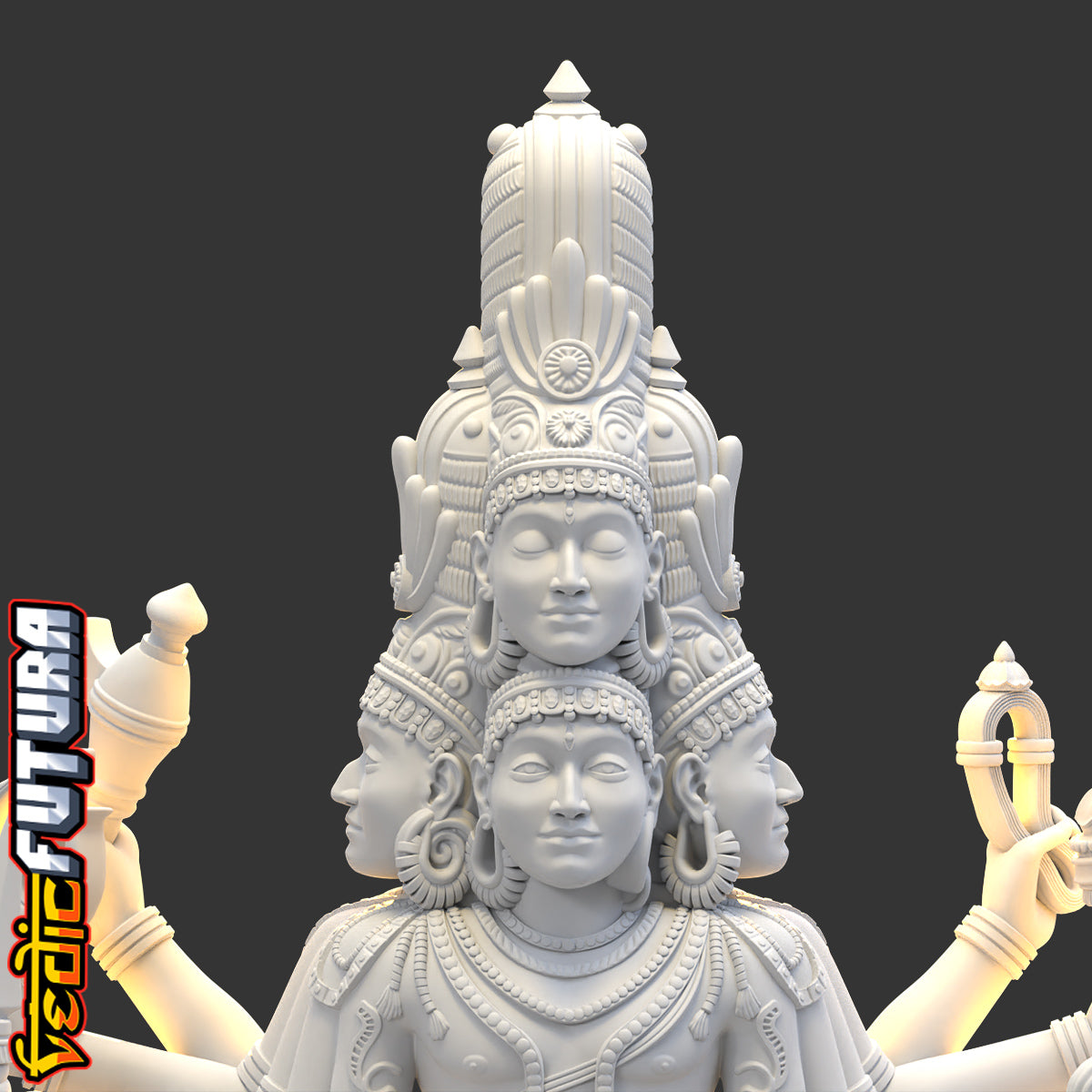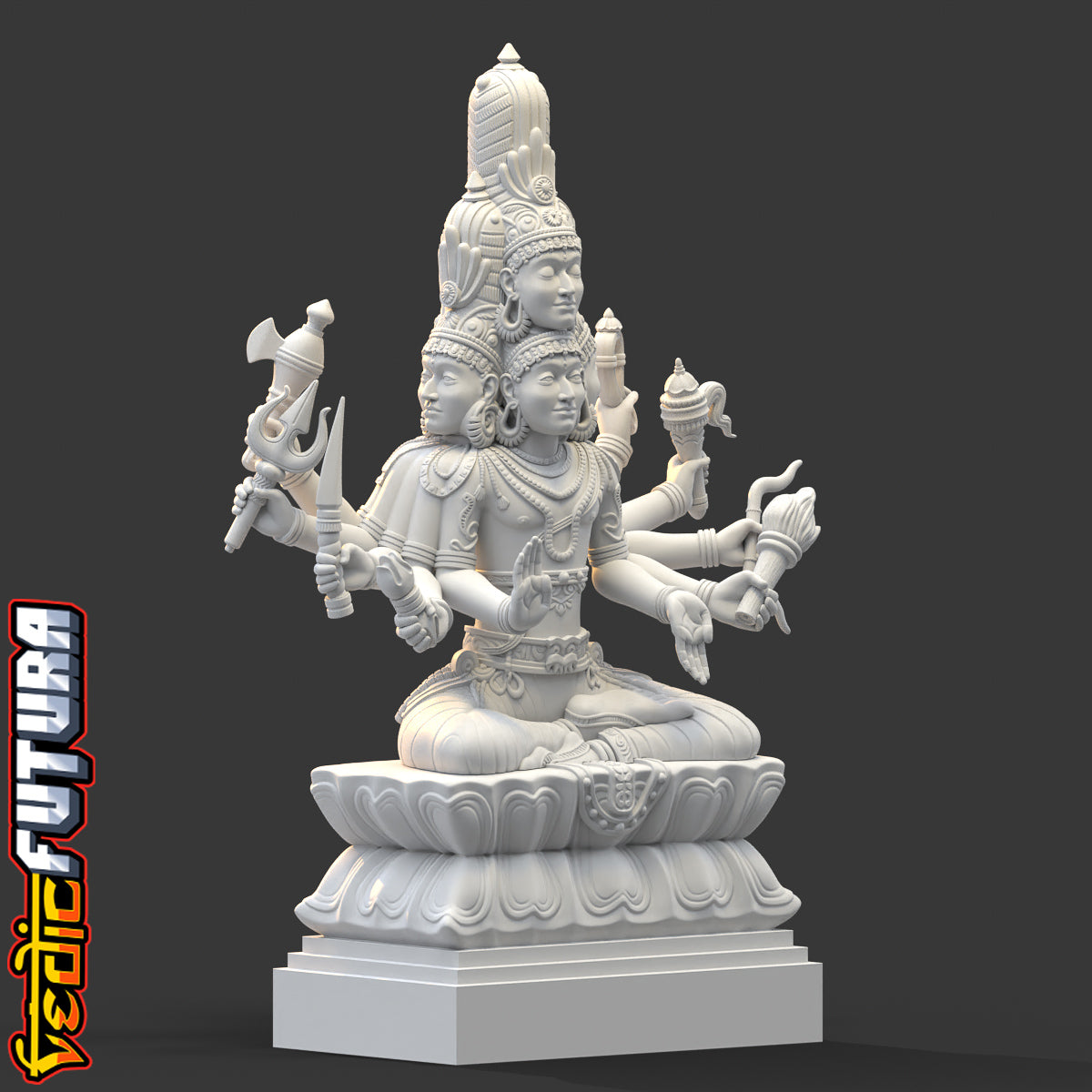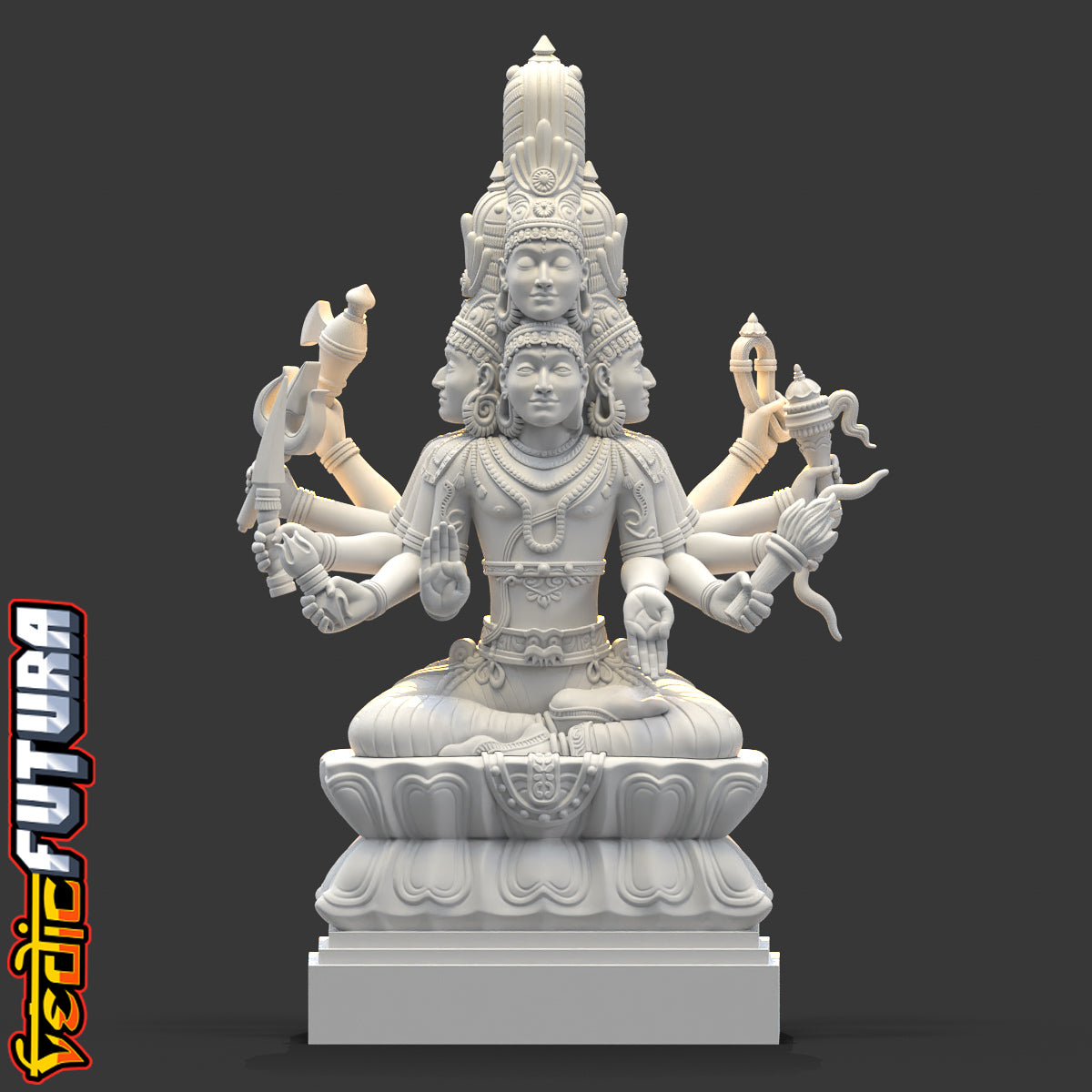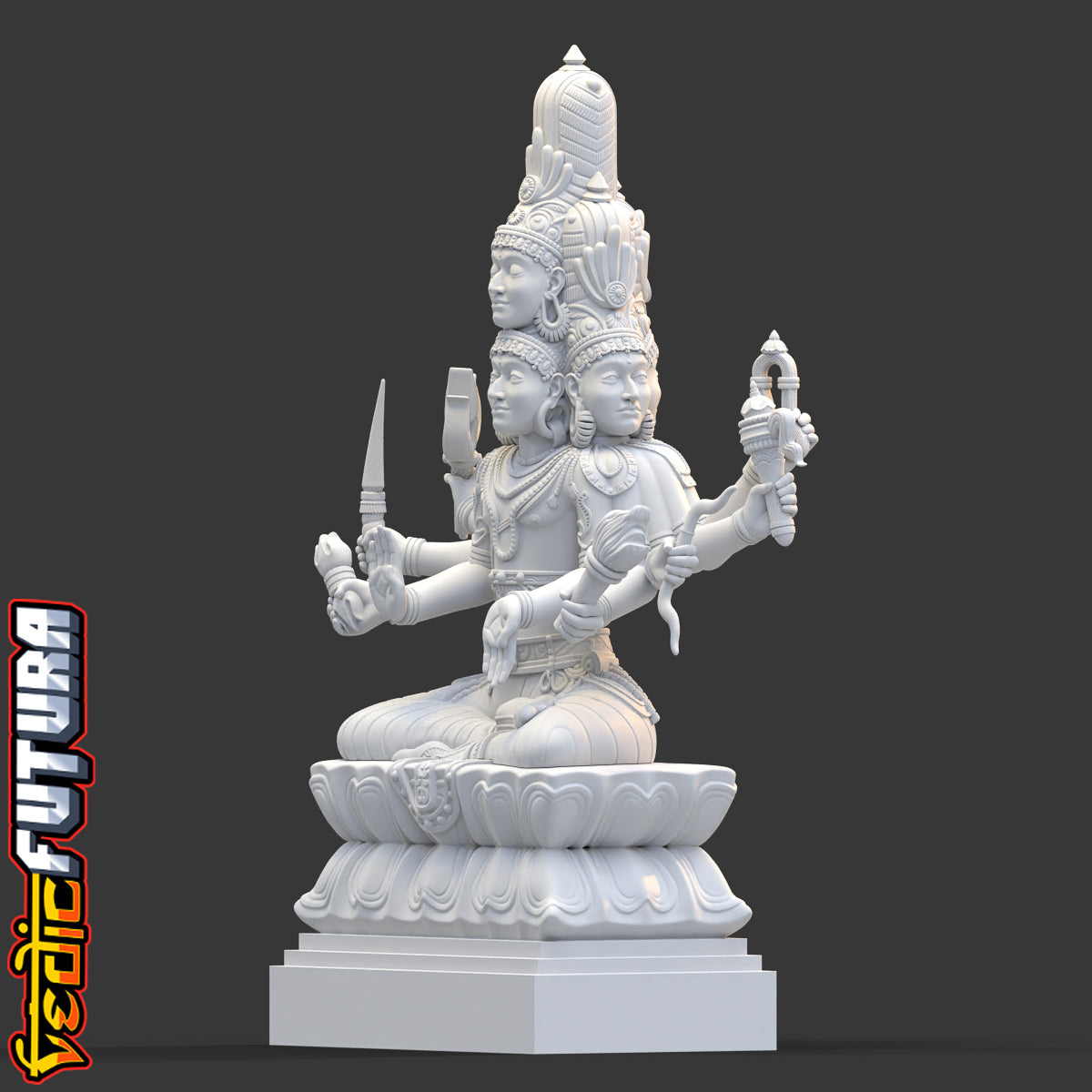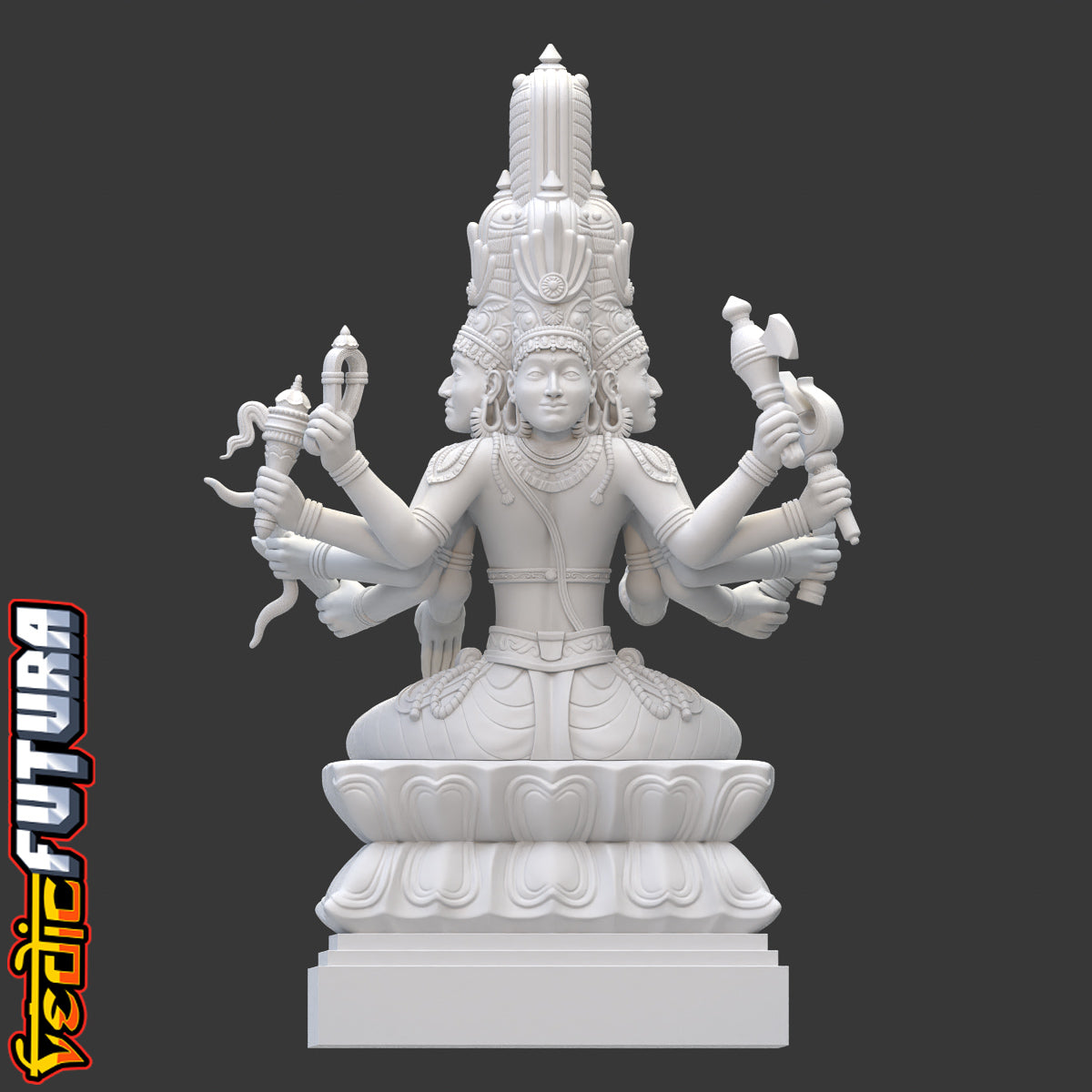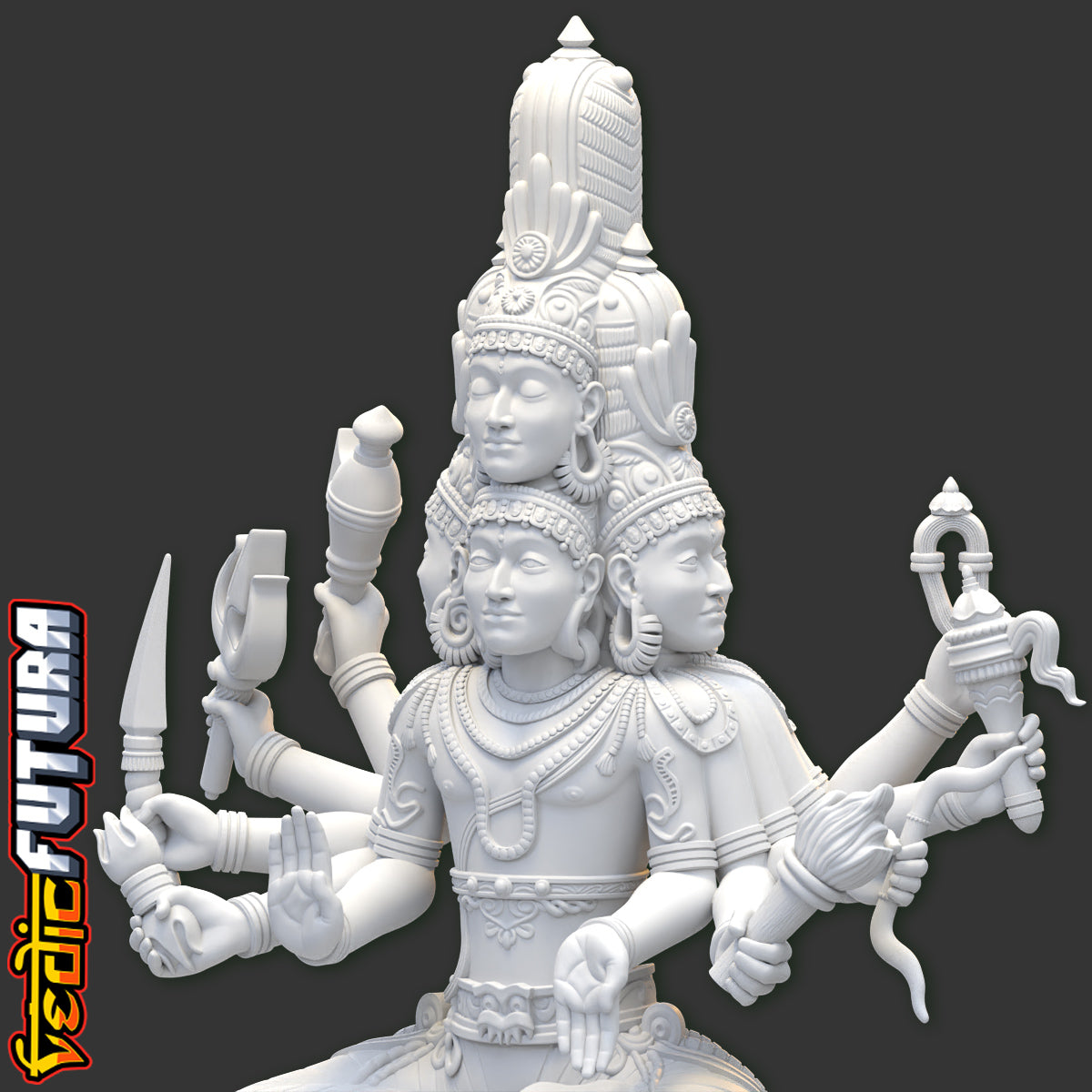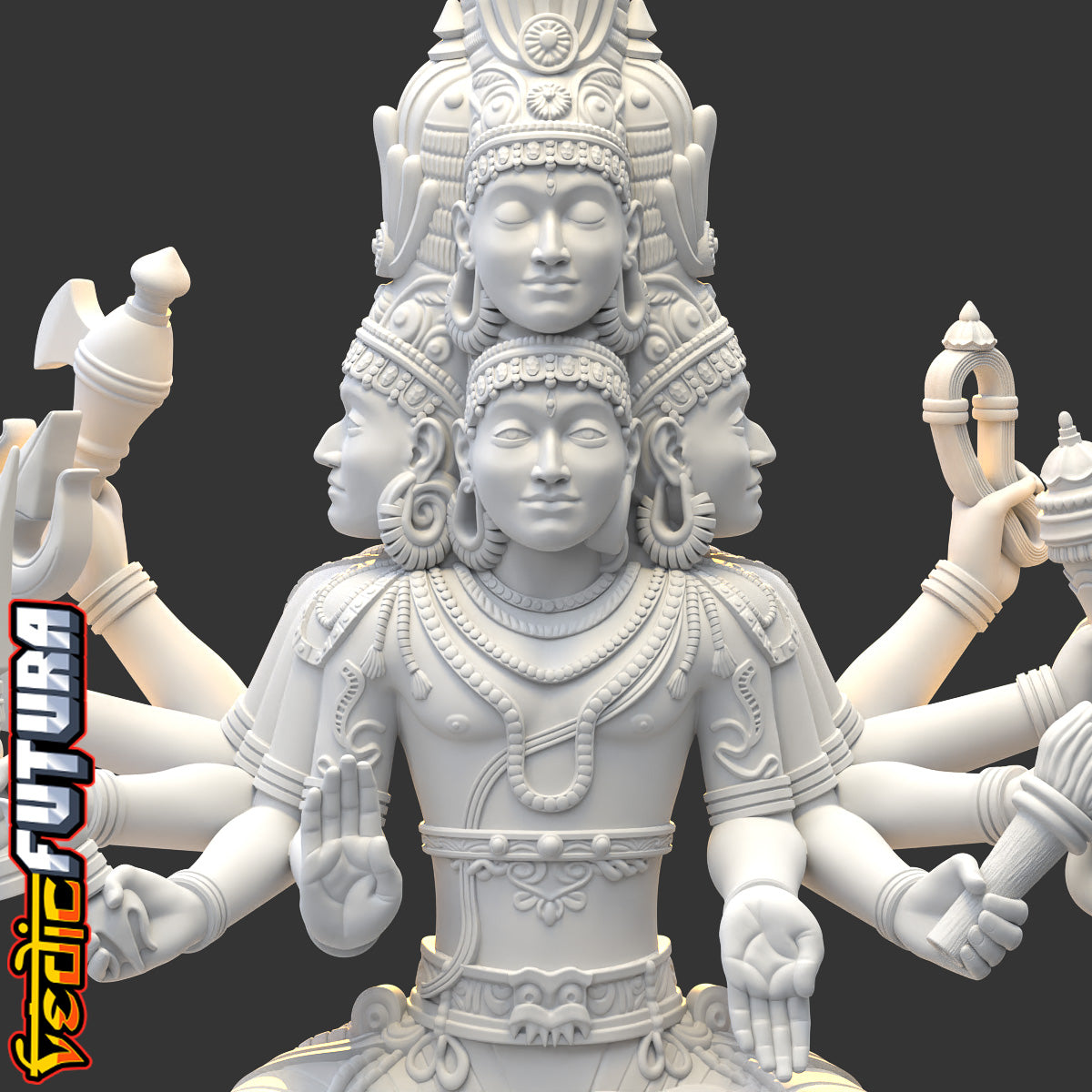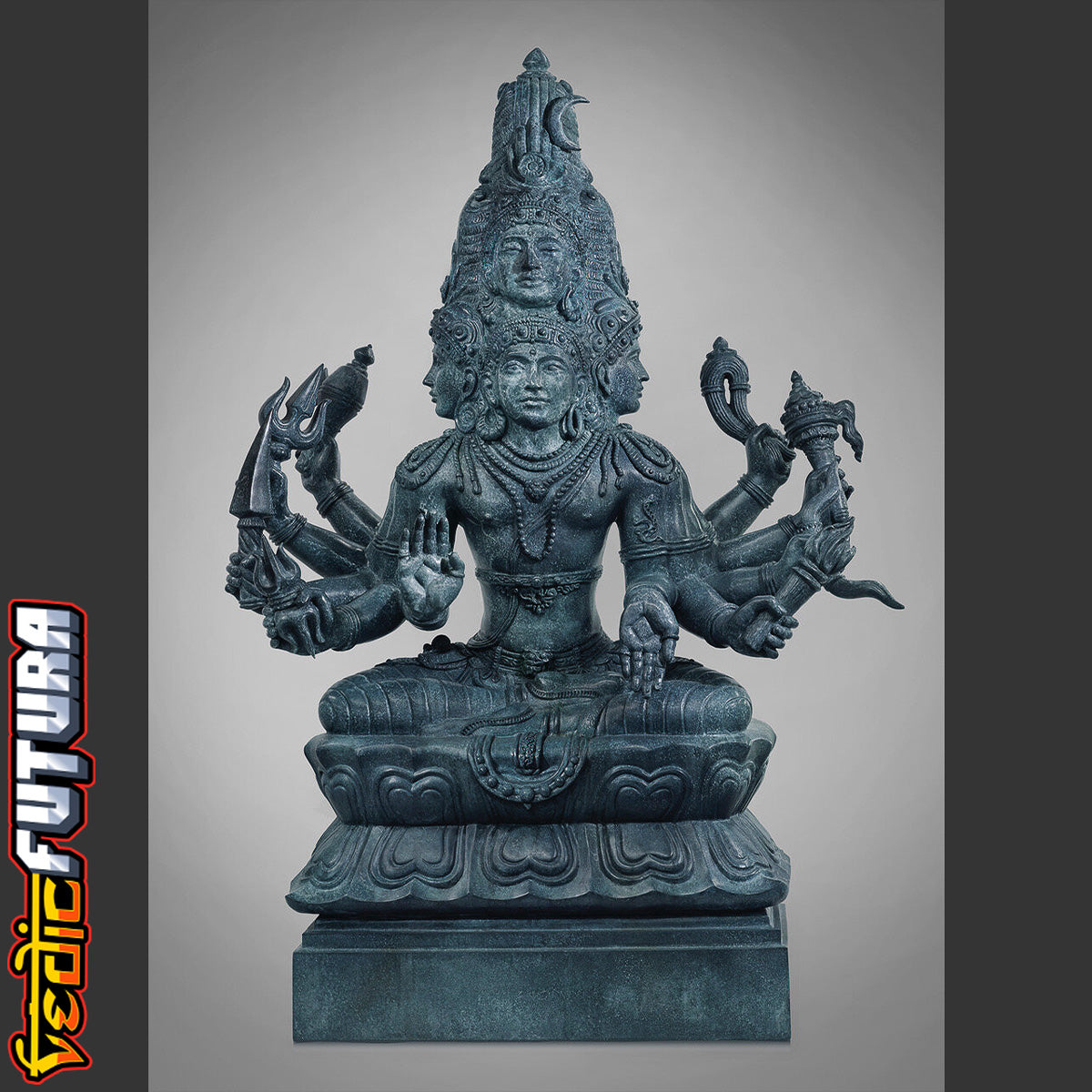Sada Shiva - The Eternal Shiva
Sada Shiva - The Eternal Shiva
Couldn't load pickup availability
Sadasiva is usually depicted having five faces and ten hands. The concept and form of Sadasiva initially emerged from South India, although many ancient sculptures of Sadasiva were obtained from various parts of India and South East Asia. His five faces, Ishana, Tatpurusha, Vamadeva, Aghora and Satyojata are known as Panchabrahmas (five creators), the emanations towards the four directions and upwards (shown here on the second tier).
According to Shaivite texts, the supreme being Parashivam manifests as pentads, rather than the trinity of other Hindu sects. Creation, Preservation, Destruction, Obscuration and Grace are done by these five manifestations respectively.
Seated on a lotus throne, Shiva is shown with weapons and various symbolisms in his 10 hands. seated on the white lotus(designed on the throne); adorned with various ornaments, face beautified with gentle smile; holding the trident, axe, sword, jewels and fire in His right hands; holding the abhaya-mudra, noose, bell, snake/bow and goad in His left hands.
Please Note: This is a digital 3D model (STL/3mf file) for 3D printing – not a physical object.
No physical product will be shipped.
After purchase, download links will be shown on your screen and sent to your email.
Please read the full website description and terms before purchasing.
